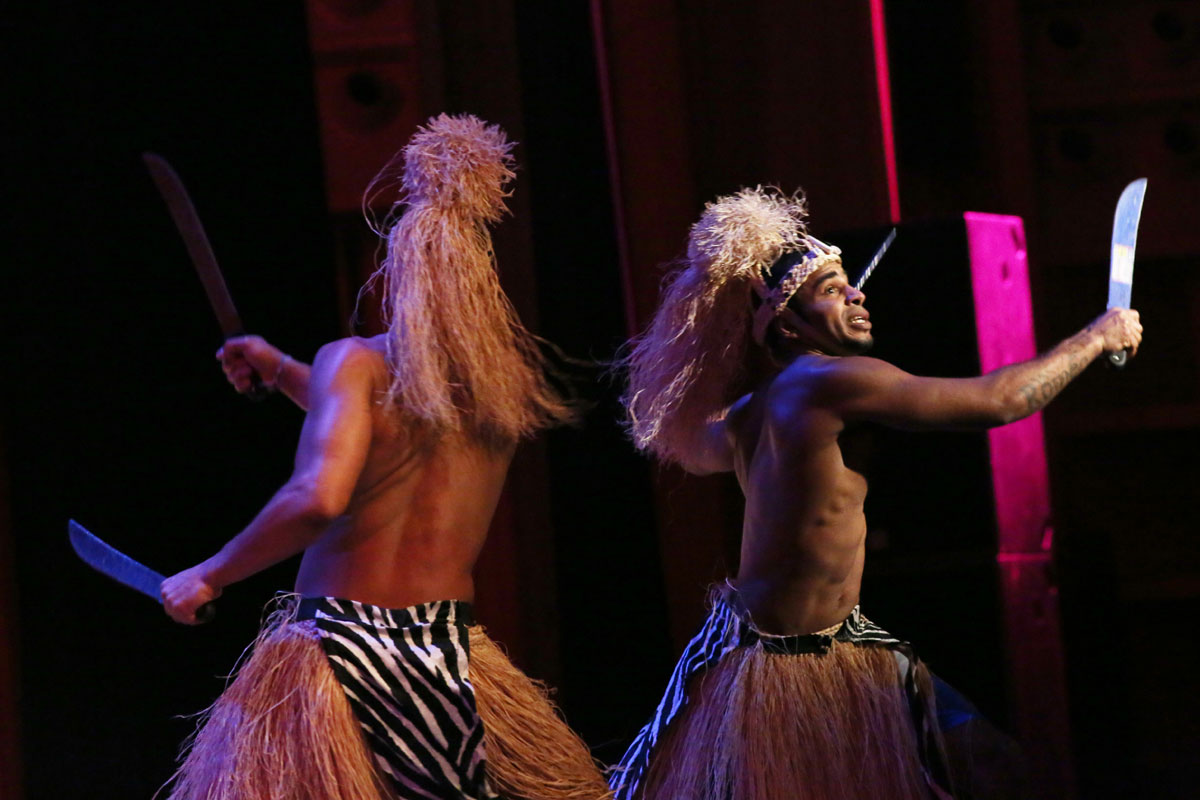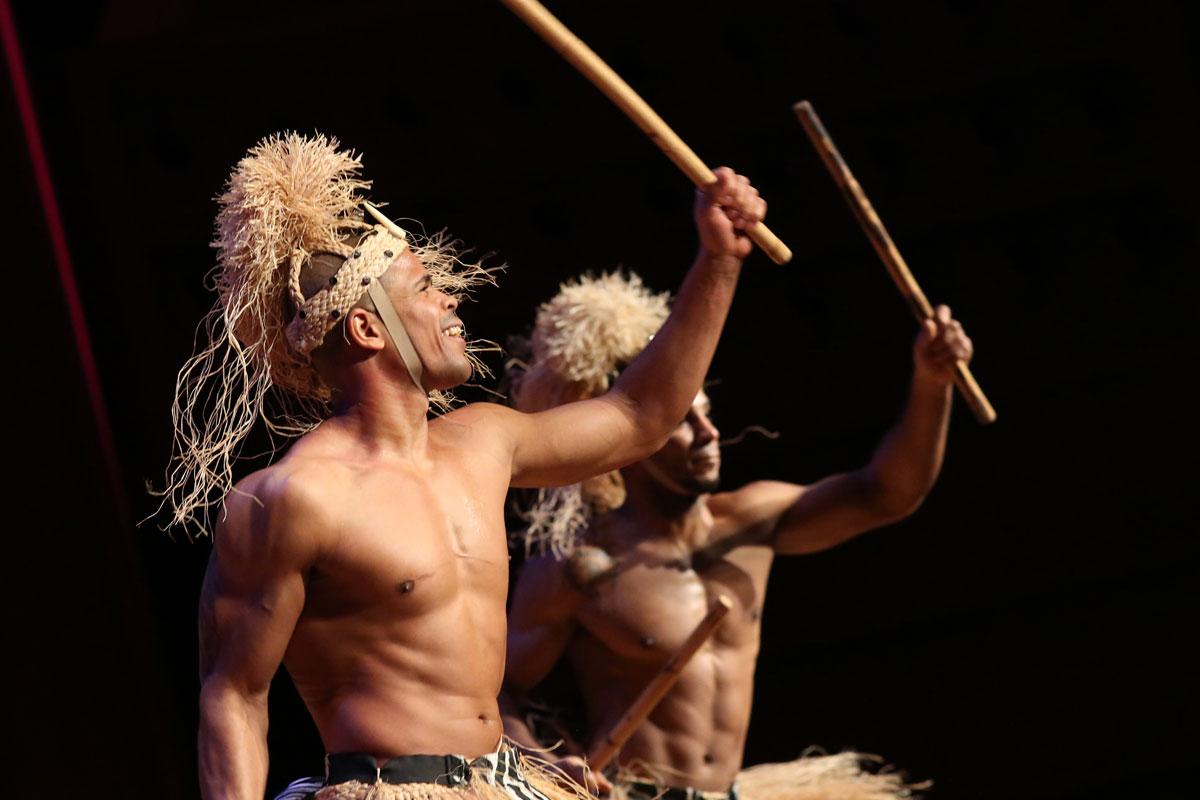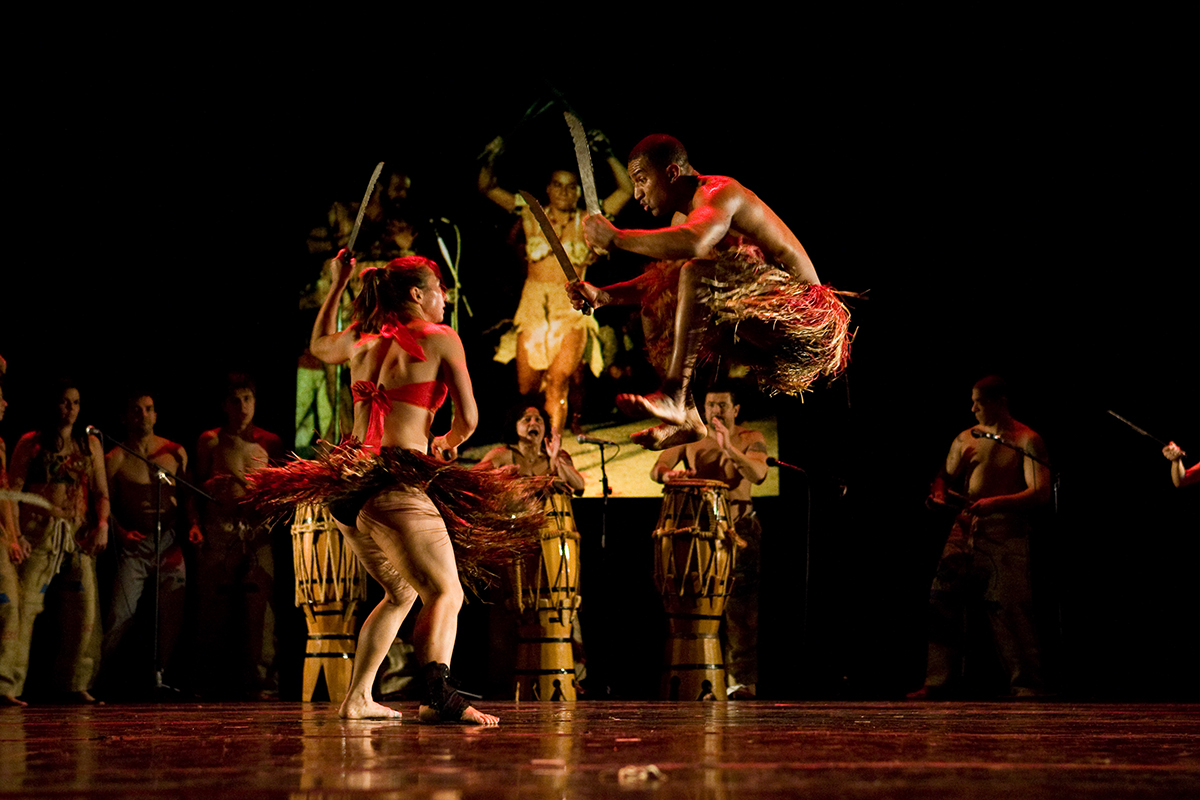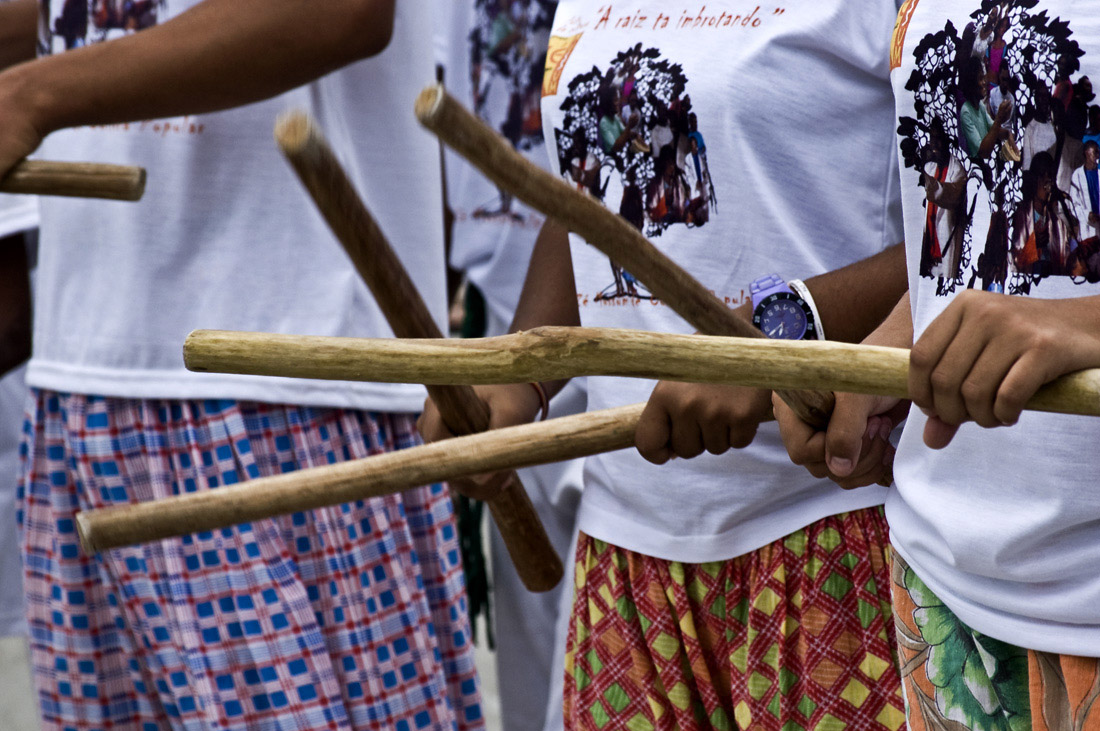Maculele: dance to make the sparks fly

That is why representatives of nation mastered sticks and knives provided that the weapon was hold in the arms even during the dances…
Not all investigators of the ancient cultures are assured that maculele has a hidden sense. According to one of the versions, Africans tap out the rhythm on the discs carved from the wood while the military essence of the performance is explained with the features of African mentality. They say, maculele supports view of man as the courageous and sturdy protector whereas stick is only a symbolical attribute.
As it goes by in another legend depicting the origin of the dance with sticks, with the help of maculele Africans claimed their rights. Working at the sugar plantations, they cut sugarcanes and almost fell flaked out being absolutely exhausted… however, they still found powers to dance. The slaves knew that dance used to be a sacral way to unleash the fury of their wrath caused by the unbearable labor. The stronger anger for unfair work conditions was the brighter torches in the arms of dancers fired. By the way, ‘torch ritual’ has a military basis. Once the slaves arranged an uprising and, binding, burned the cruelest torturers wishing to make revenge towards the slaveholders for the whole luckless destiny. Several ones succeeded in escaping from the fire of burning corded wood; nevertheless, they were not able to save themselves as the slaves hit them with the sticks. Perhaps, verily this story became the reason why the sticks serve as expedients in this combination of the martial arts and dances. At any rate, the legends say so. Photo dudu-tucci-brasil-power-drums.com
Photo dudu-tucci-brasil-power-drums.com
However, some historians tend to think that Africans did not avenge to the offenders because they were not able to take the weapon in the arms as it was dangerous and could lead to punishment. Instead, the sticks from the sugarcane brought courage to the boisterous dance.
The history of the dance maculele was relevant until the slavery was cancelled in 1888. People did not see sense in the military activity; moreover, in several years one of the most prominent maculele dancers died. The dance hardly sank into oblivion; however, it was recalled during the festival dedicated to Nossa Seniora da Purifacacao (Our Lady of the Candles) as in such a way one of the names of Virgin Mary sounded. The person who brought maculele to life had a name Paulino Alusio de Andrade, and he was more famous as Mestre Popo de Maculele residing in the city Santo Amaro. For the first time Mestre Popo performed the movements of maculele along with his friend straightly across the road so as to attract attention of women. The dance became an overnight success among the beautiful ladies, and soon Mestre taught to dance everybody who wished it offering to perform the steps during the national festivals with the religious inclinations. Now Brazilians consider Mestre Popo to be ‘the father of maculele’.
Photo dudu-tucci-brasil-power-drums.com
It was verily he who gave a posed strictness to the reckless dance establishing some rules. Exactly, dancers had to stay make the circle inside which on the order of the senior master ‘mestre’ two people came. In the meantime, Popo asked the participants of the dance not get too much involved into the show for the sake of staginess and remember about the supreme intention of the maculele: ‘We dedicate our dance to Holy Mother and princess Isabel who set African slaves free’. The teacher explained that during the songs performed in the circle, the ancient dancers asked African gods to give a boon in the view of physical capacity and flexibility as well to rescue from the paws of slavery. For the creation of accompaniment, three kinds of the drum atabake were used, particularly, rum emitting a low sound, rumpi concentrating on the middle tone, and le taking argute high notes. Concerning the usage of the gibbose blades machete which dancers tried to take for maculele, Mestre Popo stood against such an innovation. He claimed, no master of ancient African culture takes machete for this dance. It is not worth to break the traditions because they include more sense than it could seem at the first glance: ‘If the dancers had acquired machete, they would have trained on the heads of their oppressors’.
Consequently, in 1943, this unusual activity came from the range of wild movements to the category of exotic dance styles. The first groups required more than twenty years to make maculele popular in the entire Brazil which from the oldest times got accustomed to celebrate the joyous events in grand style. The carnival culture with the joy accepted the raving dance in its array. Brazilians could not be frightened with the colorful faces of the performers and skirts that were worn by dancers regardless of sex attribute.
The dance procession sang exactly on the streets an unpretentious song consisting of two words: ‘Olele maculele’. Then, the performers paid attention to the national songs and praised Brazilian nation in patriotic poems. If the team attained in the bright clothes stopped near someone’s house, and the owner peeped out to savor exotic battle, in the procession the appraisal ode to the owner of house was immediately created. Photo pinterest.it
Photo pinterest.it
Only after that the battle at the sticks started, provided that participants had not only a agility but also attention. Directly, when a master put a stick around the head, everybody should have returned to the circle. At the stated step, maculele demonstrated playful elements. In the circle ‘shepherd of cows’ came who in dance was called as ‘vakeiru’. He tried to drive a wedge and fling lasso on the neck of some participant. If the latest could not dodge the bullet, the dancers performed a mocking song, with a slight jeer over the caught hero who lied on the ground. Then he symbolically was given to drink a jurema considered as mind-blowing weed; but, indeed, this activity was only shown in the dance.All the dance maculele is penetrated with the elements taken from the martial arts. Sticks and knives are intended to remind about the struggle of African slaves who did not wish to go with the flow and surrender to their fate. Currently, maculele is performed by dancers who form a circle under the resonate drums sound involving into entracement so as to incline from the symbolical hit of knife in the imitation of the battle. How did such battles look like in the old times? Another African legend tells about that.
It happened in a desolated village that hid in the secluded corners of Nigeria. Once all the men left settlement heading for the forests in search of the wildfowl. They ordered to some guy to look attentively if the enemy did not come through the village fence trying to disturb the calmness of women and children. As it occurs in each tale, the enemy decided not to wait and, when in the village male voices faded, a stranger came so as to sponge with what did not belong to him. The guy had nothing else except for arming with the sticks and making attempts to stop the foe. He called for help, and the young man was powerless to opposite to the whole gang. Fortunately, at the moment when his forces were on the edge, all the men returned to the village and, taking sticks, fought with the enemies throwing strangers away. In order to notice the courage of the hero who separately defended the native village, and invented the dance maculele, probably, taking the name of the young man as the name of dance.  Фото edelfaule.files.wordpress.com
Фото edelfaule.files.wordpress.com
Cover photo pinterest.it





















